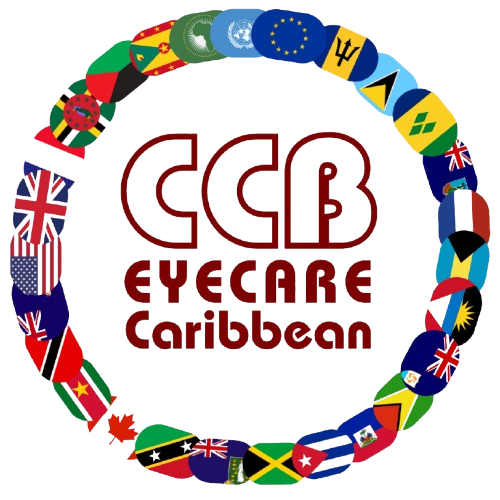The WHO Reports present the following picture in relation to blindness and visual impairment, globally:
• Approximately 314 million persons are visually impaired world-wide, with 45 million of them being blind.
• Most people with visual impairment are older, with females being at greater risk, at every age, in every part of the world.
• About 87% of the world’s visually impaired live in developing countries.
• The number of people blinded by infectious diseases has been greatly reduced, but age related impairment is increasing.
• Cataract remains the leading cause of blindness globally, except in developed countries.
• Correction of refractive errors could give normal vision to more than 12 million children (ages 5 to 15).
• About 85% of all visual impairment is avoidable, globally.
[WHO Media Center – Key Facts]
3.1 Blindness in the Caribbean:
Blindness in the Caribbean is estimated at 1%, according to the Barbados Eye Study (BES), although this figure may be higher in poor countries, such as Haiti and slightly lower in the more developed territories.
The main causes of blindness in the region are: non-operated Cataract, uncorrected Refractive Error and Low Vision, Diabetic Retinopathy, Childhood Blindness and Glaucoma. Childhood Blindness is not as prevalent, but is a main cause of blinding years in the population.
As is the case globally, a high percentage of blindness in the Caribbean is avoidable (preventable or curable).
The Strategic Plan for Vision 2020: The Right to Sight – Caribbean, observed that “visual disability has far-reaching individual, social and economic consequences, impeding development in childhood and productivity in adulthood, with functional and quality of life implications across the whole life spectrum. Cost-effective technologies are available to prevent, control or minimize visual impairment for most disorders”. The Plan emphasizes that “what is needed is political and professional commitment to, and provision of resources for, the delivery and application of these technologies to populations in need”.
[The Strategic Plan for Vision 2020 – Caribbean Region, pg. 1]
3.1.1 Blindness and Low Vision in the Anglophone Caribbean:
(See Table III – below):
|
Country |
Population |
Blindness (1%) |
Low Vision (3%) |
Total: (B+LV) |
|
1. Anguilla |
13,477 |
135 |
405 |
540 |
|
2. Antigua & Barbuda |
87,506 |
875 |
2,625 |
3,500 |
|
3. (The) Bahamas |
327,000 |
3,270 |
9,810 |
13,080 |
|
4. Barbados |
293,000 |
2,930 |
8,790 |
11,720 |
|
5. Bermuda |
64,000 |
640 |
1,920 |
2,560 |
|
6. British Virgin Islands |
22,016 |
220 |
660 |
880 |
|
7. Cayman Islands |
51,900 |
519 |
1,557 |
2,076 |
|
8. Commonwealth of Dominica |
72,000 |
720 |
2,160 |
2,880 |
|
9. Grenada |
108,000 |
1,080 |
3,240 |
4,320 |
|
10. Guyana |
739,000 |
7,390 |
22,170 |
29,560 |
|
11. Jamaica |
2,667,000 |
26,670 |
80,010 |
106,680 |
|
12. Montserrat |
4,488 |
45 |
135 |
180 |
|
13. St. Kitts/Nevis |
48,000 |
480 |
1,440 |
1,920 |
|
14. St. Lucia |
166,000 |
1,660 |
4,980 |
6,640 |
|
15. St. Vincent & The Grenadines |
120,000 |
1,200 |
3,600 |
4,800 |
|
16. Trinidad & Tobago |
1,328,000 |
13,280 |
39,840 |
53,120 |
|
17. Turks & Caicos Islands |
30,600 |
306 |
918 |
1,224 |
|
TOTAL: |
6,141,987 |
61,420 |
184,260 |
245,680 |
3.1.2 Blindness and Low Vision in Children of School Age – Anglophone Caribbean:
(See Table IV – below):
|
Country |
Population of school-aged children (5 – 16 yrs.) |
Blindness (1:1000) |
Low Vision (Blind x 3) |
Total: (B+LV) |
No. of b& vi children receiving special education |
Service Gap |
|
1. Anguilla |
2,833 |
3 |
9 |
12 |
n/a |
n/a |
|
2. Antigua & Barbuda |
23,679 |
24 |
72 |
96 |
6 |
90 |
|
3. (The) Bahamas |
72,514 |
73 |
219 |
292 |
20 (?) |
272 |
|
4. Barbados |
41,496 |
41 |
123 |
164 |
8 (?) |
156 (?) |
|
5. Bermuda |
10,013 |
10 |
30 |
40 |
n/a |
n/a |
|
6. British Virgin Islands |
4,513 |
5 |
15 |
20 |
n/a |
n/a |
|
7. Cayman Islands |
6,390 |
6 |
18 |
24 |
n/a |
n/a |
|
8. Commonwealth of Dominica |
17,452 |
17 |
51 |
68 |
4 |
64 |
|
9. Grenada |
30,684 |
31 |
93 |
124 |
14 |
110 |
|
10. Guyana |
165,867 |
166 |
498 |
664 |
29 |
635 |
|
11. Jamaica |
625,888 |
626 |
1,878 |
2,504 |
114 |
2.390 |
|
12. Montserrat |
806 |
1 |
3 |
4 |
n/a |
n/a |
|
13. St. Kitts/Nevis |
10,906 |
11 |
33 |
44 |
n/a |
n/a |
|
14. St. Lucia |
36,392 |
36 |
108 |
144 |
35 |
109 |
|
15. St. Vincent & The Grenadines |
27,518 |
28 |
84 |
112 |
n/a |
n/a |
|
16. Trinidad & Tobago |
239,182 |
239 |
717 |
956 |
30 |
926 |
|
17. Turks & Caicos Islands |
4,433 |
4 |
12 |
16 |
n/a |
n/a |
|
TOTAL: |
1,320,566 |
1,321 |
3,963 |
5,284 |
260 (?) |
4,752 (?) |
4. The state of Education:
